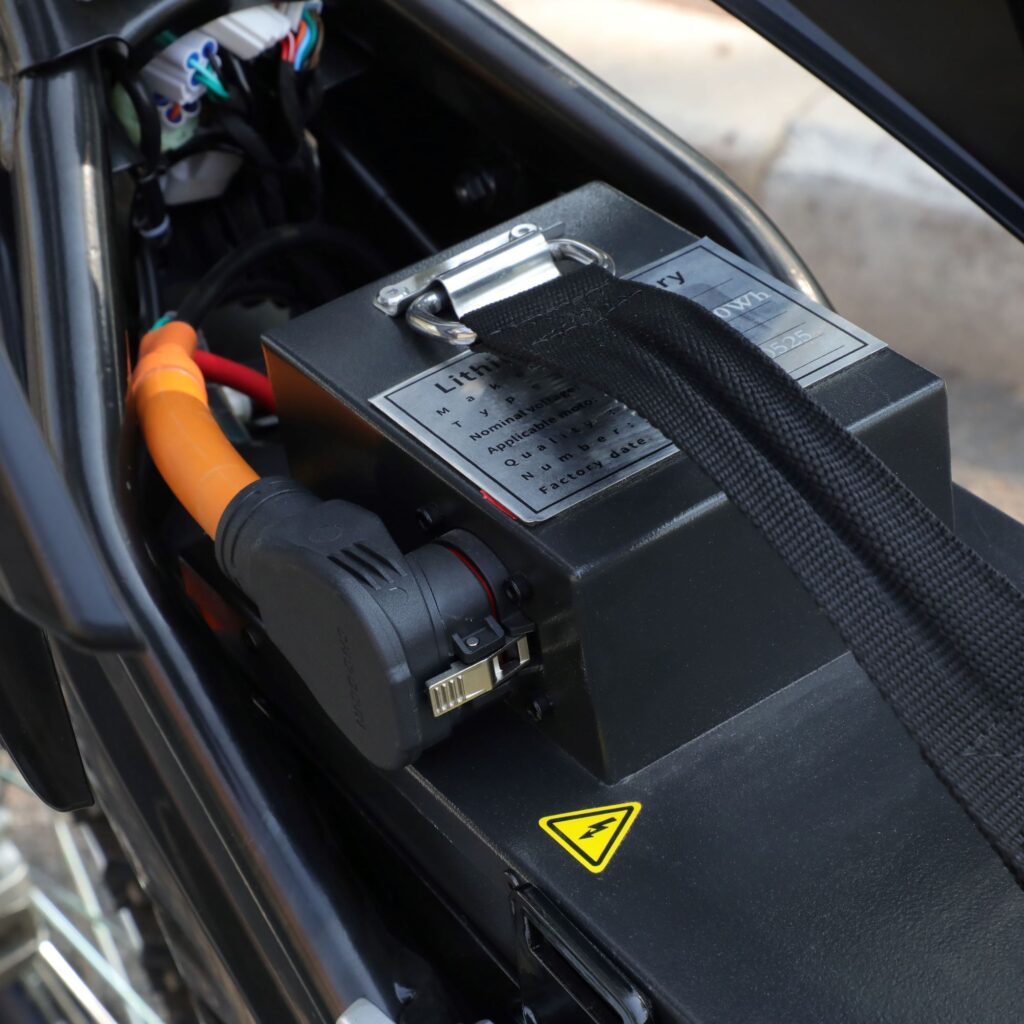
The electric bike industry in China has experienced rapid growth in recent years. This swift expansion has not only revolutionized urban commuting but also laid the groundwork for the burgeoning market of Electric Adventure Bikes. As people’s desire for outdoor exploration and sustainable travel options intensifies, the Electric Adventure Bike sector is poised to tap into this trend, with its future potential appearing limitless.
What is an Electric Adventure Bike?
An Electric Adventure Bike is a specialized type of electric bicycle designed for off-road adventures and long-distance touring. It combines the power and efficiency of an electric motor with the ruggedness and versatility of a traditional adventure bike. These bikes are built to handle various terrains, from rough trails to smooth roads, making them ideal for riders who want to explore the great outdoors with the added boost of electric assistance.
Classification and Common Types of Electric Adventure Bikes
Electric Adventure Bikes can be classified into several categories based on their design, features, and intended use:
- Hardtail Electric Adventure Bikes: These bikes have a rigid frame with no rear suspension. They are lighter and more affordable than full-suspension models, making them suitable for riders on a budget or those who prioritize simplicity and efficiency. Common examples include the Giant Trance E+ Pro and the Trek Fuel EX 9.9s. These bikes offer a good balance of performance and value, with their hardtail design providing a responsive ride on a variety of surfaces.
- Full-Suspension Electric Adventure Bikes: Equipped with both front and rear suspension systems, full-suspension models provide enhanced comfort and control on rough terrain. They are more capable of handling extreme off-road conditions and are favored by serious adventure enthusiasts. The Specialized Turbo Levo and the Santa Cruz Hightower LT Carbon C are popular choices in this category. Their advanced suspension technology allows riders to tackle challenging trails with confidence, absorbing shocks and maintaining stability.
- Fat-Tire Electric Adventure Bikes: Featuring oversized tires, fat-tire electric adventure bikes are designed for riding on soft and unstable surfaces such as sand, snow, and mud. They offer increased traction and stability, making them perfect for exploring remote and rugged environments. The Surly Pugsley and the Salsa Mukluk are well-known fat-tire electric adventure bikes. Their wide tires provide a unique riding experience, allowing riders to venture into areas that would be difficult to access with standard tires.
- Gravel Electric Adventure Bikes: Gravel bikes are a versatile category that bridges the gap between road and mountain bikes. Electric gravel adventure bikes take this concept further by adding an electric motor. They are suitable for long-distance touring on mixed terrain, including gravel roads, dirt paths, and paved surfaces. The Cannondale Topstone Neo and the Trek Checkpoint SL Disc are examples of gravel electric adventure bikes. Their design allows for a comfortable and efficient ride, with the electric assist helping to cover long distances with ease.
Features of Electric Adventure Bikes
Electric Adventure Bikes come with a range of features that set them apart from other types of bicycles:
- Powerful Electric Motor: The heart of an Electric Adventure Bike is its electric motor. These motors are designed to provide strong and reliable power output, assisting riders in climbing steep hills and maintaining speed on flat terrain. Most Electric Adventure Bikes use either mid-drive or hub motors. Mid-drive motors, such as those found in the Bosch Performance Line CX or the Shimano Steps E8000, are known for their efficient power delivery and better weight distribution. Hub motors, on the other hand, are simpler in design and can be found in models like the Bafang BBS02.
2. Long-Range Battery: To support extended adventures, Electric Adventure Bikes are equipped with high-capacity batteries. These batteries can provide a range of 50 to 100 miles or more on a single charge, depending on factors such as rider weight, terrain, and level of assistance used. Modern batteries, like the Panasonic NCR18650B or the Samsung INR21700, are designed to be lightweight and offer fast charging capabilities, ensuring that riders can spend more time on the trail and less time waiting for their bike to recharge.
3. Rugged Frame and Components: Built to withstand the rigors of off-road riding, Electric Adventure Bikes feature sturdy frames made from materials such as aluminum, carbon fiber, or steel. The frames are designed to be durable and resistant to impacts and vibrations. Additionally, the components, including the brakes, gears, and wheels, are chosen for their reliability and performance in challenging conditions. Hydraulic disc brakes, such as those from Shimano or Tektro, provide powerful and consistent stopping power, while wide-range gearing systems like the SRAM Eagle or Shimano Deore XT allow riders to tackle a variety of gradients.
4. Comfort and Ergonomics: Long-distance riding requires a comfortable and ergonomic design. Electric Adventure Bikes often come with adjustable seats, handlebars, and stems to accommodate different rider sizes and preferences. Suspension forks and, in the case of full-suspension models, rear shocks, help to absorb shocks and vibrations, reducing fatigue and enhancing the overall riding experience. Some bikes also feature integrated storage solutions, such as rear racks or frame bags, to carry essential gear and supplies during multi-day trips.
5. Advanced Electronics and Connectivity: Many Electric Adventure Bikes are equipped with advanced electronic systems that provide riders with real-time information about their ride. This can include data such as speed, distance, battery level, and assistance mode. Some models even offer connectivity features, allowing riders to pair their bikes with smartphones or GPS devices. This enables them to access navigation apps, track their rides, and receive software updates for their bike’s firmware. Examples of such systems include the Bosch Kiox display or the Shimano E-Tube Project, which enhance the rider’s interaction with their bike and provide a more personalized and connected riding experience.
Conclusion
In summary, the Electric Adventure Bike is a fascinating and rapidly evolving category within the broader electric bicycle industry. Its development has been spurred by the growth of the electric bike market in China and the increasing demand for outdoor adventure and sustainable travel options. Electric Adventure Bikes come in various types, including hardtail, full-suspension, fat-tire, and gravel models, each catering to different rider preferences and intended uses. They are characterized by powerful electric motors, long-range batteries, rugged construction, comfortable ergonomics, and advanced electronic features. As technology continues to advance and people’s interest in exploring the outdoors grows, the future of Electric Adventure Bikes looks extremely promising, with the potential to transform the way we experience adventure and travel.
Related searches for Electric Adventure Bikes



